energy
Latest

A totally new energy source in slow moving rivers
try{document.getElementById("aol-cms-player-1").style.display="none";}catch(e){}Today on In Case You Missed It: University of Michigan researchers spent years creating a water-harnessing river turbine to create electricity, called the VIVACE. It's the first time electricity appears to be effectively generated in slower rivers rather than oceans, but that's because the developers used physics to get turning turbines to agitate the water enough to create more energy for their neighboring cylinders. It's an as-yet prototype but a promising new development in the realm of water-powered electricity. If you're interested in the giant balloon video from China, that's here, and the JibJab app can be downloaded from an app store. As always, please share any interesting tech or science videos you find by using the #ICYMI hashtag on Twitter for @mskerryd.

California energy standard could cut PC power use by a third
Computers aren't the power hogs they used to be, but California's Energy Commission believes the industry can do better. It just revealed the likely final version of standards that would reduce PC and monitor energy use in the state, and likely the rest of the US by extension. By requiring technology that reduces idle power draw (like more efficient power supplies), the Commission estimates that it could cut about 1,636 gigawatt-hours of electricity use per year in California, or just under a third of the state's PC energy consumption.

Indian researchers recycle fish scales into energy nanogenerator
Indians consume a lot of fish: Data from 2014 estimated that each urban citizen consumed an average of 2.8 kg per year, or about 3.7 million kg for the whole country. That leaves a lot of leftover bones, scales and tails. As they reported this week in Applied Physics Letters, a team of researchers at Jadavpur University looked for ways to re-use this "biowaste" and pioneered a method to generate electricity from it.

World's largest offshore windfarm to be built in the UK
Britain is set to become home to two of the world's largest offshore wind farms after ministers approved plans for a new 1,800-megawatt project capable of supplying 1.8 million UK homes. Hornsea Project Two will be built 55 miles off the coast of Grimsby and could feature up to 300 turbines -- each one taller than the Gherkin building in London.
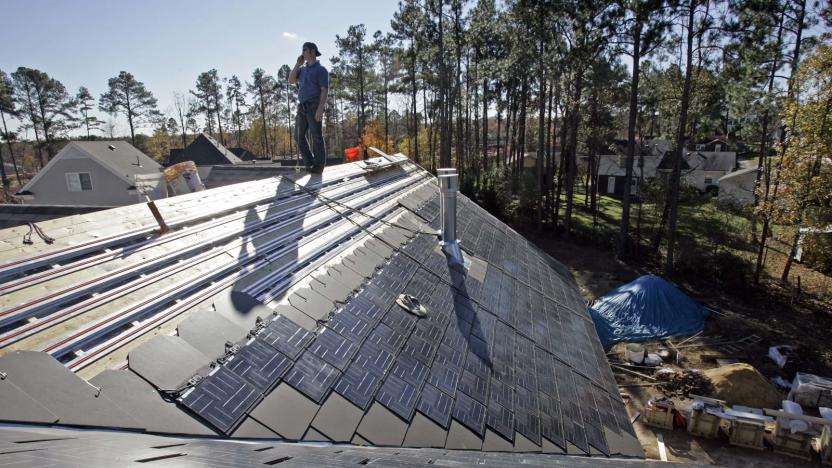
Elon Musk is working on a roof made of solar panels
Elon Musk's fondness for ambitious, out-of-left-field ideas isn't restricted to electric cars or rockets. During SolarCity's latest earnings call, the entrepreneur revealed that his energy-focused company is developing a "solar roof" -- not a roof with solar panels on it, a roof made out of solar cells. As Musk explains, people install millions of new roofs every year. Why not have them embrace solar power when they look for a replacement? Homeowners with old roofs tend not to install solar panels, since they know they'll have to rip everything off before long.
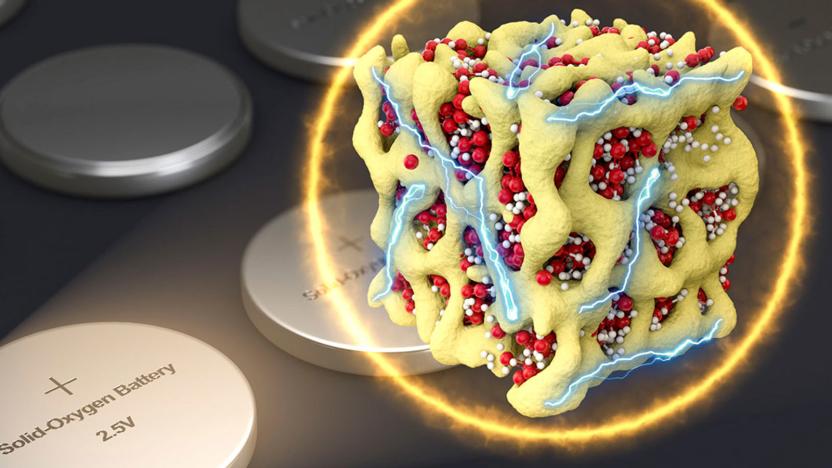
Lithium-oxygen battery promises lighter electric cars
Lithium-air batteries are supposed to lead to lighter, longer-ranged electric cars thanks to their high power-to-weight output, but they have some showstopping flaws: they not only degrade rapidly, but waste a lot of energy input as heat. Neither is exactly ideal in a vehicle that's expected to last you several years and charge quickly. Scientists at MIT, Argonne National Laboratory and Peking University might have found a better way, though. They've engineered a lithium-oxygen battery that offers the light weight of lithium-air without its drawbacks.
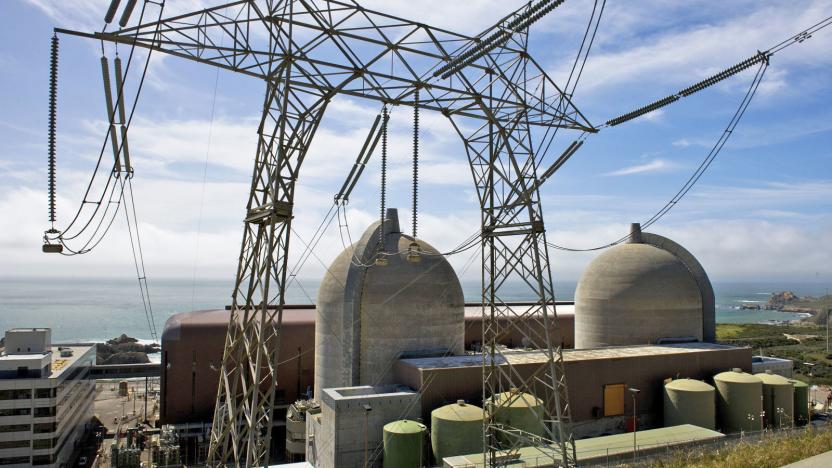
California's last nuclear power plant to close in 2025
California's nuclear-powered dream has an expiration date. The state's utility conglomerate Pacific Gas and Electric (PG&E) announced yesterday that they will close the last remaining nuclear plants by 2025. They'll replace the output with renewable energy and better efficiency in other stations. But, barring any changes to the moratorium on new plants, it's likely the end for atomic power in the Golden State.

Apple will turn landfill gas into sweet electricity
Apple has been given permission by North Carolina to build a facility that uses the methane emitted from landfill waste to create electricity. The plant, which will be based in Catawba County, will stand for 16 years, with the option of a five-year extension should the parties agree. As 9to5Mac explains, it's an energy method that both generates power from waste and prevents the release of methane into the atmosphere. The news comes less than a day after the firm was given permission to begin reselling energy to power companies.

Artificial 'leaf' could beat real plants at converting sunlight
Natural photosynthesis is considered a good target for solar energy conversion, but it's already considered old hat. Harvard scientists have developed a leaf-like system that should be more effective at converting solar energy than plants themselves. The technology boils down to a jar of bacteria (Ralstonia eutropha), a cobalt water-splitting system and a pair of electrodes. When you send electricity through this partly biological system, the electrodes turn the water into hydrogen gas that you can use for fuel and carbon-based materials. It's only 10 percent efficient, but that's better than the widely established 8 percent baseline for real-world performance.
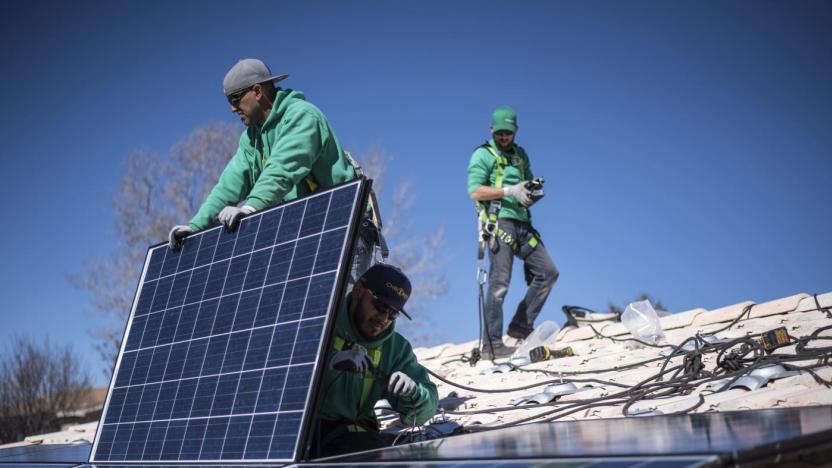
The Energy Department just started its own podcast
You normally don't think of government agencies embracing podcasts -- even if tight budgets aren't a problem, creativity isn't usually their top priority. The US Department of Energy wants to buck that trend, though. It just started up a podcast, Direct Current, that delves into energy technology, government initiatives and energy history. The first episode touches on the problems surrounding the "soft costs" of solar power, solar technology's milestones and the history of the Energy Department itself.

UK's proposed nuclear plant is one of the costliest things on Earth
Nuclear power has been around for decades, but it still isn't cheap... in fact, it may result in one of the most expensive objects on the planet. Cost estimates for the UK's proposed Hinkley Point C reactor have crept up to £24 billion (about $35 billion), making even some of humanity's more ambitious construction projects seem like small potatoes. The Large Hadron Collider cost "just" $5.8 billion to build, the BBC notes. About the only thing that rivals Hinkley on Earth is Chevron's recently completed $54 billion natural gas plant in Australia. If you're not picky, the International Space Station's collective modules top everything at a total of $110 billion.

Study: we can ditch fossil fuels in 10 years, if we want to
The quest to end the use of fossil fuels might not be as daunting as you think. A University of Sussex study claims that humanity could drop coal and oil within a decade, based largely on historical evidence that many tend to overlook. Professor Benjamin Sovacool notes that energy transitions have happened quickly whenever there was a combination of "strong government intervention" with economic or environmental incentives to switch. It only took 11 years for the Canadian province of Ontario to abandon coal energy, for example, while nuclear power surged to 40 percent of France's electricity supply within 12 years. In the case of fossil fuels, it's a combination of climate change worries, dwindling resources and advanced technology that could step up the pace.

World's largest coal mining firm declares bankruptcy
It won't shock you to hear that the coal industry is facing tough times lately. Job cuts, mine closures and other signs of financial trouble are par for the course. However, that downturn just reached an important milestone: Peabody Energy, the world's largest private coal mining company, has filed for Chapter 11 bankruptcy across most of its US divisions. The firm says it didn't have much choice between steep drops in the price of coal, a weak Chinese market, overproduction of shale gas and "regulatory challenges" (read: better environmental policies). In plainer terms, people just aren't as interested in coal energy as they were in years past.
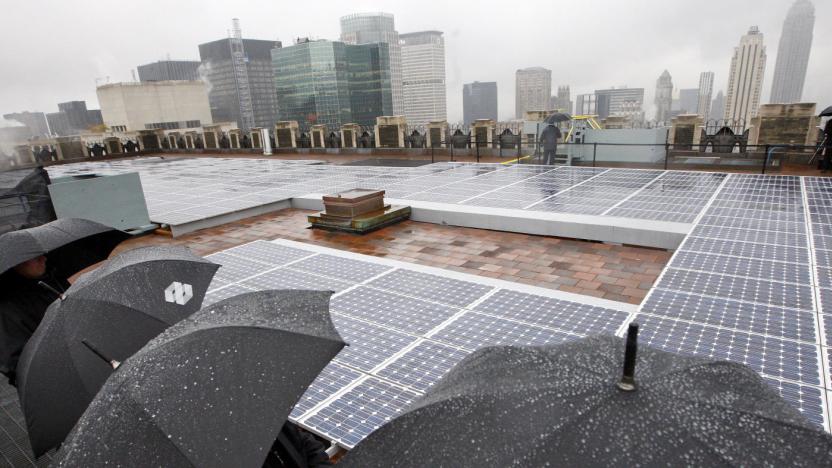
Solar cell generates power from raindrops
Rain is normally a solar energy cell's worst nightmare, but a team of Chinese scientists could make it a tremendous ally. They've developed a solar cell with an atom-thick graphene layer that harvests energy from raindrops, making it useful even on the gloomiest days. Water actually sticks to the graphene, creating a sort of natural capacitor -- the sharp difference in energy between the graphene's electrons and the water's ions produces electricity.

Moth eyes inspire solar cells that work indoors
As a rule, most solar cells need to catch direct sunlight. Even those that work indoors can only do so much to generate power from artificial light sources. However, British researchers have found a clever (and decidedly) unusual way to harvest energy while inside: by imitating moths. They've created a graphene-based material that traps electromagnetic waves much like a moth's eye, making it one of the most energy-absorbent substances to date. With the right antennas, it could produce energy from not just sunlight, but any device that emits microwave or radio waves -- your smartphone could help power your smartwatch.

MIT mapped where Boston's biggest energy hogs reside
Boston might be best known for the longstanding baseball rivalry between its Red Sox and the New York Yankees, but maybe the nerdier folks among us will think of it beyond Fallout 4 and PAX East now. Researchers from the Massachusetts Institute of Technology have developed a model for estimating gas and electricity demand for every building in the city. Some 100,000 edifices are included and the model is even being used to aid in making decisions regarding energy policy, according to PhysOrg.
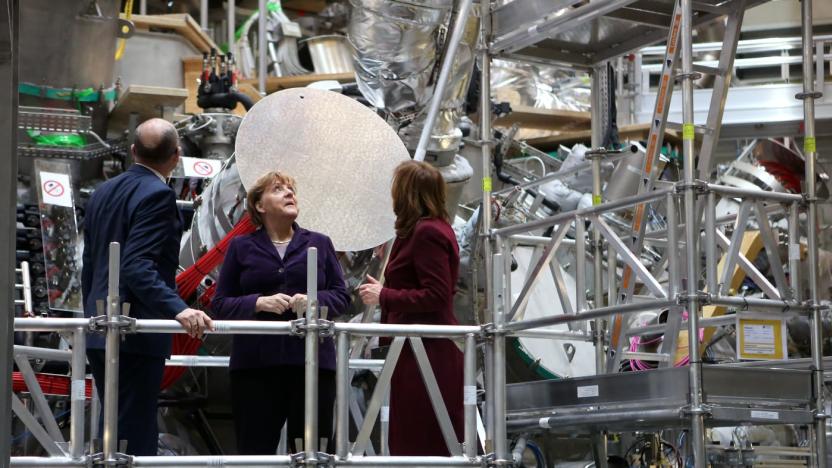
Twisty fusion reactor goes online after 19 years of work
Germany just took fusion power one big, important step forward. The country's Max Planck Institute for Plasma Physics has just switched on Wendelstein 7-X, the first large fusion reactor based on a twisty stellarator design. It's only producing hydrogen plasma at the moment and won't actually generate energy, but power isn't really the point. Instead, it'll serve as proof that stellarators could provide energy while operating continuously, unlike current (tokamak-based) fusion reactors that operate in short pulses. They should be safer, too.

Mechanical 'trees' generate energy by swaying in the wind
What if windmills looked more like trees? Well, a team of engineers at Ohio State University is looking for answer to that question with structures that resemble trees, but actually create energy when they move in the breeze. That swaying motion from the wind, and the resulting structural vibrations, is converted into electricity with electromechanical materials such as polyvinylidene fluoride (PVDF). The project isn't merely concerned with those tree-like structures, though. It also looks to harvest the energy generated from the vibrations of buildings and bridges.
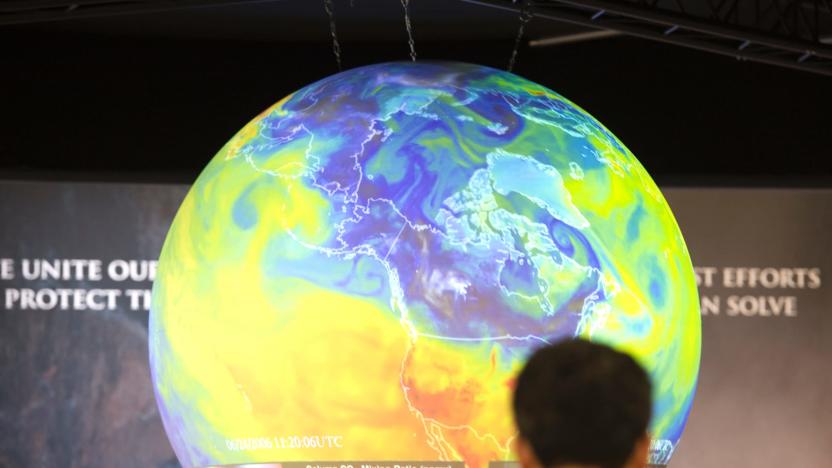
Human climate influence means we're skipping an ice age
According to a new study published in Nature, human-generated climate change -- specifically the massive additions of carbon dioxide and other greenhouse gasses to the atmosphere -- is causing the Earth to effectively delay the start of the next ice age by 100,000 years. Typically, ice ages occur once every 50,000 years or so; as they have in at least eight regularly intervalled times in the Earth's history.

Study: A Tesla Powerwall pays for itself after nearly 40 years (Update)
The Tesla Powerwall promises to power your home in a more efficient, green way than traditional energy options, all for a manageable cost. The Institute for Energy Research looked into the numbers and found that it would take 38 years for the Powerwall to pay for itself if your home isn't already hooked up with the proper solar-power connections. If your house does have the necessary solar-cell components, it'll take about 31 years for Tesla's Powerwall to break even, IER says.








